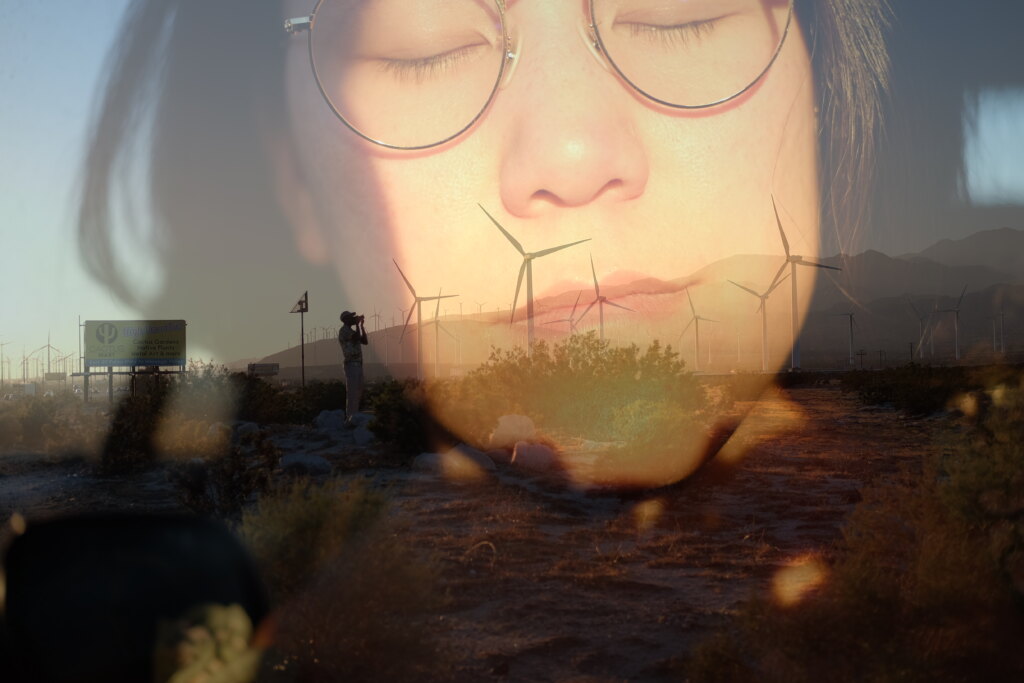Studio Tian (天) on jewelry as poetry
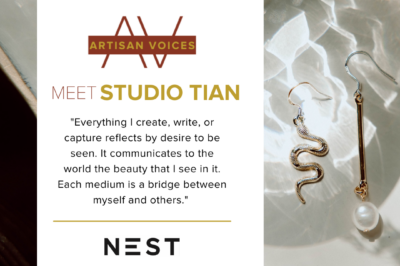
Stephanie Sekou is the owner of Studio Tian (天), a small batch collection of jewelry that she handcrafts in her home studio in Los Angeles, California. As a jewelry maker, poet, and photographer, Stephanie has embraced working across different creative disciplines. “Everything I create, write, or capture reflects my desire to be seen. It communicates to the world the beauty that I see in it. Each medium is a bridge between myself and others.”
Stephanie’s jewelry, as she’s described them, are “poems”; more than ornaments – they are pieces brought to life by the wearer that connect and nourish our deepest selves.
In this conversation, Stephanie reflects on family, her complex creative and cultural identities, and the relationship between her jewelry and poetry.
Palm Springs Double Exposure 2021. Photo by Stephanie Sekou Photography

Home Portrait Series 2022 (top) and Joshua Tree Double Exposure 2016 (bottom). Photos by Stephanie Sekou Photography
You are the kind of creative who has many different pursuits. What is your inclination to explore so many different things?
I see myself as an artist who expresses herself through jewelry making, photography, and poetry. When a new wave of energy or curiosity comes I like to explore it using the right outlet. Sometimes jewelry doesn’t explain the feeling inside, but a poem or a picture does. Sometimes I don’t want to be in my feelings or my headspace so I get tactile and pick up my crochet needle or jewelry tools. I have come to accept and even celebrate my complexities. Like a stained glass mirror I am a collage pieced together artfully to create the whole of who I am. Each medium is a bridge between myself and others. It communicates to the world the beauty that I see in it.
I’m interested in the different identities that you carry. What does being “hyphenated” mean to you?
As an Asian-American and daughter of immigrants, having a hyphenated identity is in my DNA. I grew up straddling two to three worlds. The obvious worlds of East and West, but also existing between the different cultures of my classmates and friends. All of my friends growing up were children of immigrants from all over the world. My hyphenated identity gives me compassion and empathy for folks who do not exist in the mainstream. I am used to not fitting in. That is why the identity of ‘Artist’ feels like the right fit for me. It is the job of the artist, in my opinion, to explore the intersections of identity.
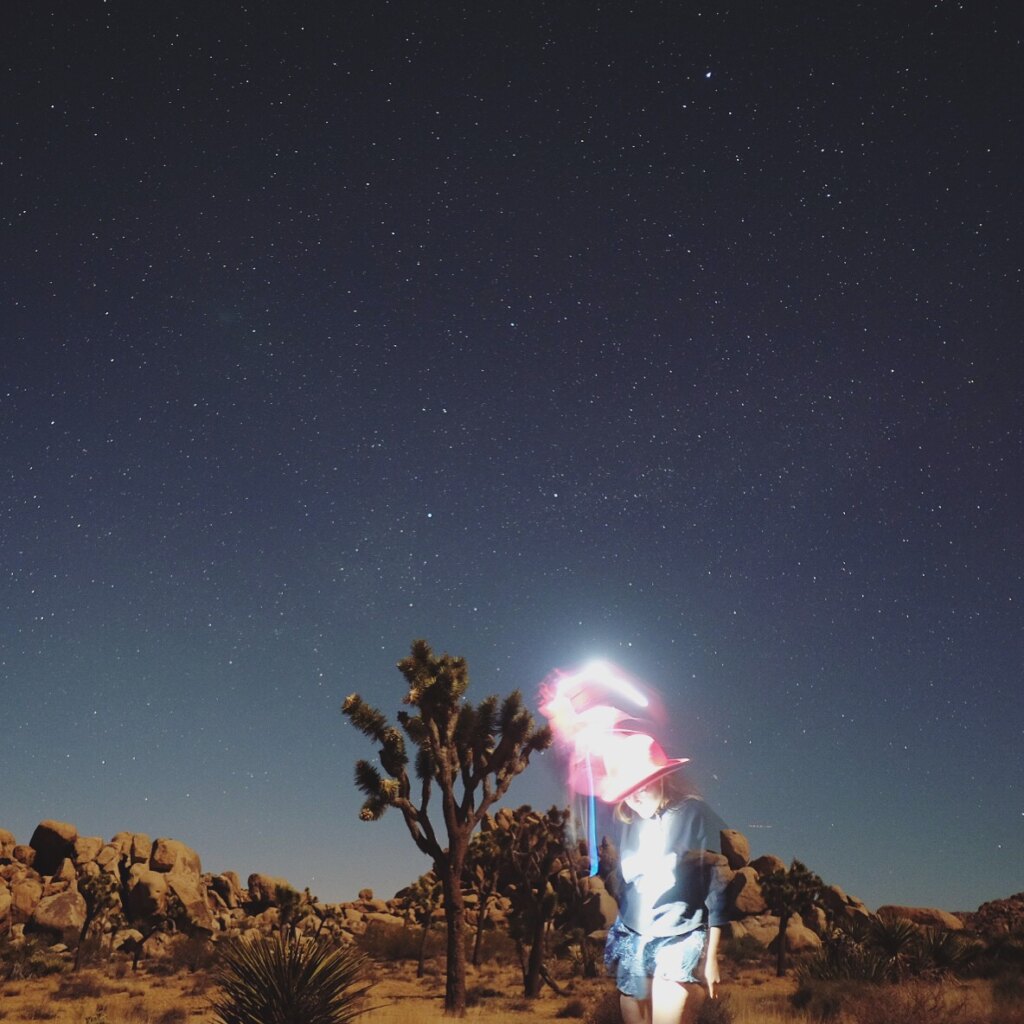
Joshua Tree Light Painting 2016. Photo by Stephanie Sekou Photography
Do you feel like you have a creative origin story, a moment or a memory from your childhood that led you to pursue a creative career?
My creative origin story began when my mother taught me how to crochet as we watched television in our living room. I remember it came so naturally to me. It was so satisfying to turn yarn into something useful, something beautiful like a blanket or a scarf. Needlework is a way for me to connect with my grandmother and mother. I find a lot of peace in my crochet practice.
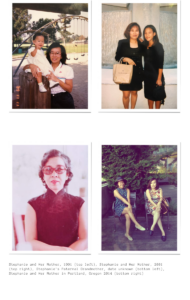
You’ve touched on this experience of making things as a communal one with your mother and grandmother. Can you take a moment to talk more about your grandmother and mother and their influence on you?
My parents always hoped my brother and I would follow their path. They really just wanted me to have a practical and secure career as well as a predictable stream of income. After having very little money in Taiwan, both of my parents wanted to avoid poverty in America. My mother however was a complex woman – herself. She was traditional in very few ways, and extremely open minded and forward thinking in most others. She believed women had every right to earn their own money, to hold leadership roles in public spaces, and to even be breadwinners if they chose to be. She owned her own business for many years and she gave me my entrepreneurial spirit.
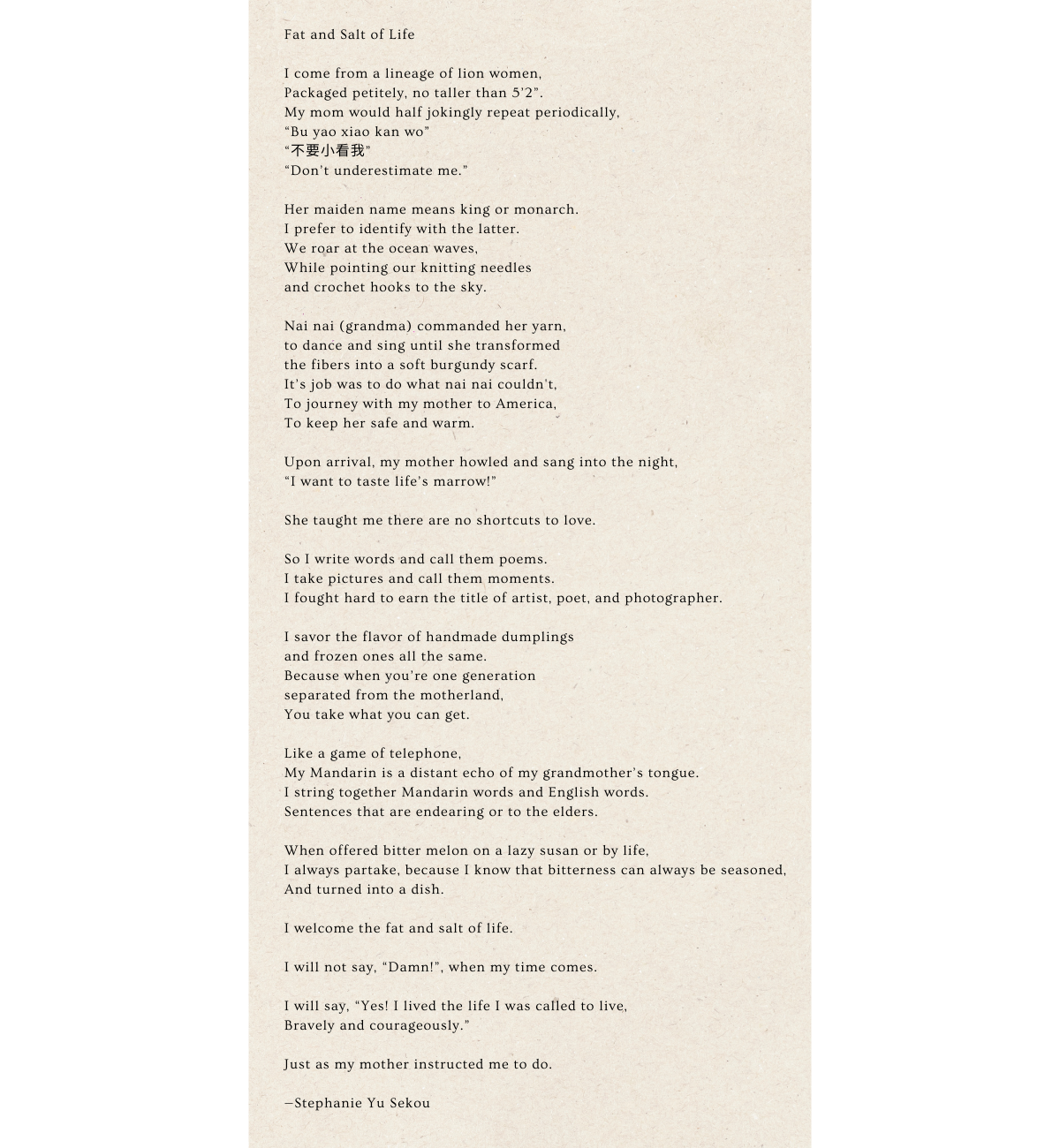
For many years she [my mother] tried to encourage and maybe even force me into pursuing law, real estate, or accounting. But in my twenties she realized I had the skills to be a business owner. I was a self starter, good sales person, hard worker, and very good with people. After a day of selling my art and jewelry at a farmers market at 22 years old she [my mother] looked at me with so much excitement and said, “Maybe you can make jewelry for a living!” She even offered to sell my jewelry to her girlfriends. It was such a sweet moment for us, especially because my jewelry wasn’t all that great back then.
Even though my grandmother and mother were talented crafters, professionally they focused on accounting and bookkeeping. Their attention to detail as bookkeepers and CPAs taught me to be meticulous about the work I do. I am present and focused when I take a photo, write a line of poetry or am closing a jump ring on a pair of earrings. I come from a line of hard working women who are not afraid to sit down and get to work for a long period of time. Even when my grandmother spreads peanut butter on a piece of toast she covered every centimeter of it. She wasted nothing. My mother and grandmothers showed me the value of paying attention to detail and to work slowly and diligently. To them there is pride in handing over a well made product to your customer. In my jewelry studio, I make sure that every detail is completed correctly to avoid any mishaps. The women in my family display quiet beauty. They didn’t like to draw attention to themselves with their clothing or adornments. This has influenced me to live a minimalist and simple lifestyle. Their clean aesthetic is reflected in my dainty and even bold jewelry lines. I make timeless jewelry that can be worn on special occasions as well as in day to day life.
Ultimately it was her [my mother’s] belief in me that led me to take the risk and become my own boss. When your own mother believes in you, no one else can really say much to tear you down, not even yourself. I remember in an interview, Maya Angelou said her mother told her, “You are somebody special.” That’s the type of calling my mother bestowed upon me. To this day, even though she has passed on, I know she is with me in spirit at every pop up market I sell at.
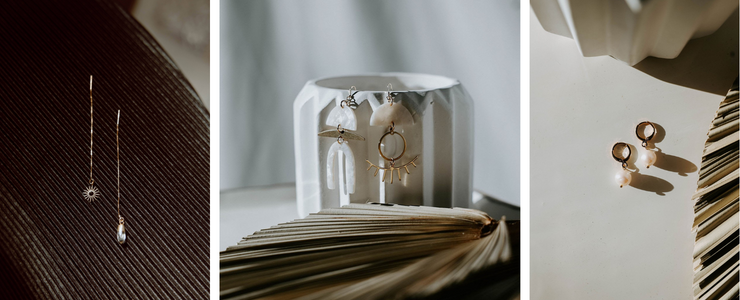
Beaming (left), Poetry and Sol (center), Pearl Huggies (right). Photos by Julianne Rose Photography
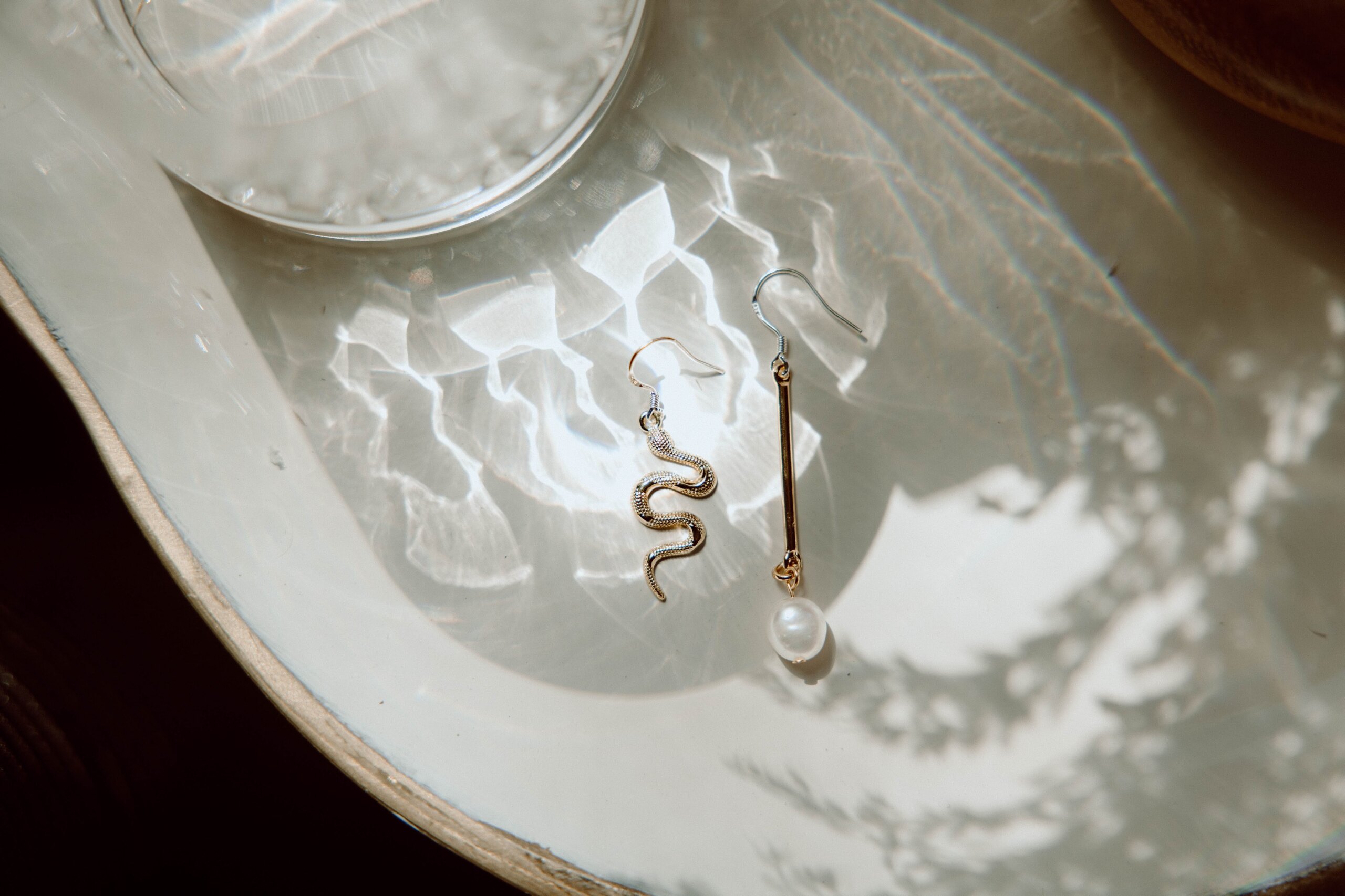
My Great Awakening. Photo by Julianne Rose Photography
What attracted you to jewelry?
Unlike photography or poetry, jewelry is something others can wear and adorn themselves with. I love brightening someone’s day and providing them a talisman to wear, something to help them remember who they are. I also love how quiet and contemplative the practice of jewelry making is. I get to sit in my creative nest and play. Every new piece of jewelry I create is a poem that can be worn by many different people. I love how universal it is.
I love the idea of each piece of your jewelry being “a poem that adorns your body.” What are the connections between poetry and jewelry making? How does your poetry influence your jewelry, and visa versa?
The naming of each jewelry design is very important to me. It is like naming a poem. I want the person who wears the piece of jewelry to connect with not only the physical aspects of the piece but also the name. I often dig into my poetry archives to find names for my earrings, necklaces and rings. Other times it works the opposite direction. I will write a poem based on the design and the specific stone that is used. My goal this year is to dedicate a poem to each piece of jewelry on my website. I will be making a photo/poetry book featuring my poems and designs as well.
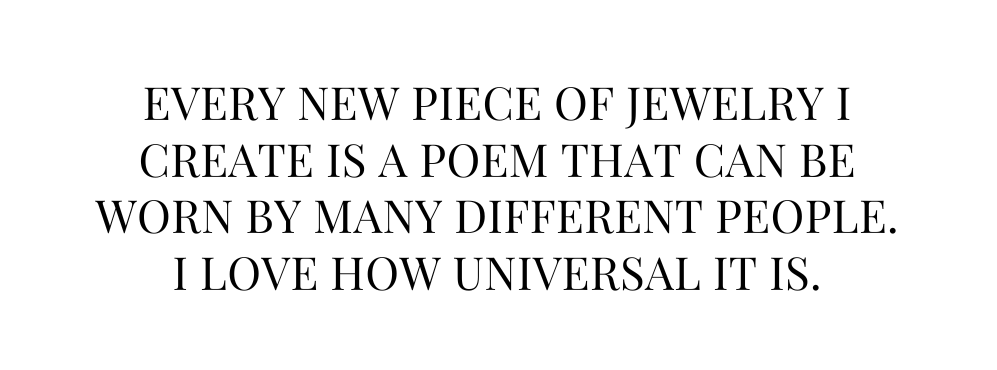
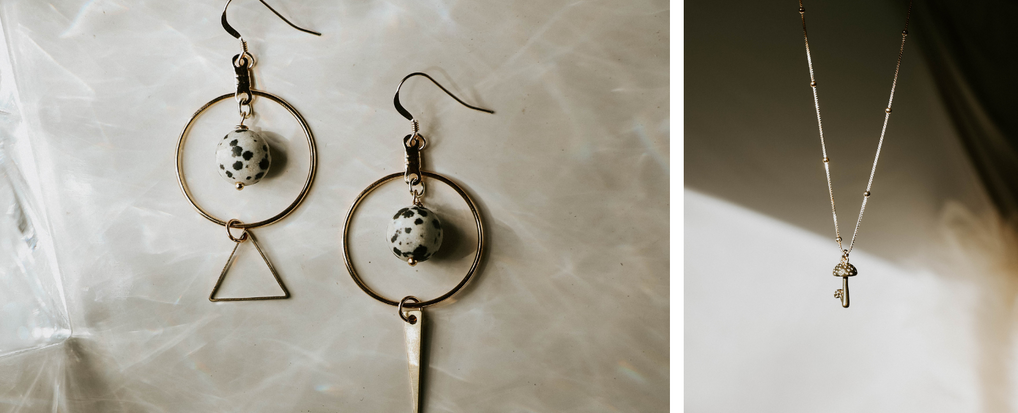
Lighthouse Dalmation Jasper (left) and Flourish 18k Gold Filled Necklace (right). Photos by Julianne Rose Photography
What is the story behind the name of your business, Studio Tian (天)?
’Tian’ (天) means heaven or sky in Chinese, my native tongue. I liked the idea of naming my business “My Daily Art Practice.” But I decided it was too long. So I was playing with the word ‘tian tian’ which means ‘daily’ or ‘everyday’ in Chinese. I also love that ‘tian’ on its own alludes to the ethereal and that which is above. It touches upon the spiritual aspect of my art practice. It’s a way for me to transcend the daily grind. The word studio also alludes to my photography practice, which I still hold near to me. It is important for me to have a name I can expand into, a name that is evergreen.
That’s beautiful. This idea of creating as a spiritual practice. Can you talk more about the spiritual aspect of your jewelry? Do the materials you use have a spiritual meaning for you?
I use stones that are very tender and vulnerable. For example, my favorite stone to use currently is the carnelian stone. It is a gorgeous blood red hue and it is used to heal the heart. I use jade and pearl a lot because it’s what was passed down to me from my grandmother. I was given a jade bracelet and pendant as a baby. These stones feel like home when I wear them.
Healing is a big theme in my personal and creative life. I make art in order to process my life. And processing life is a form of healing. It can be a very harsh world, full of loss and pain. When I write a poem I know in my heart that someone will connect to my words. That makes me feel less alone and it also makes that person feel less alone. This is healing. When we can look at one another’s pain and say, “me too.” Healing and connection are at the heart of everything I do.
To learn more about Studio Tian, visit shopstudiotian.com and follow her @shopstudiotian
*Edited for grammar and clarity. All photos courtesy of Studio Tian
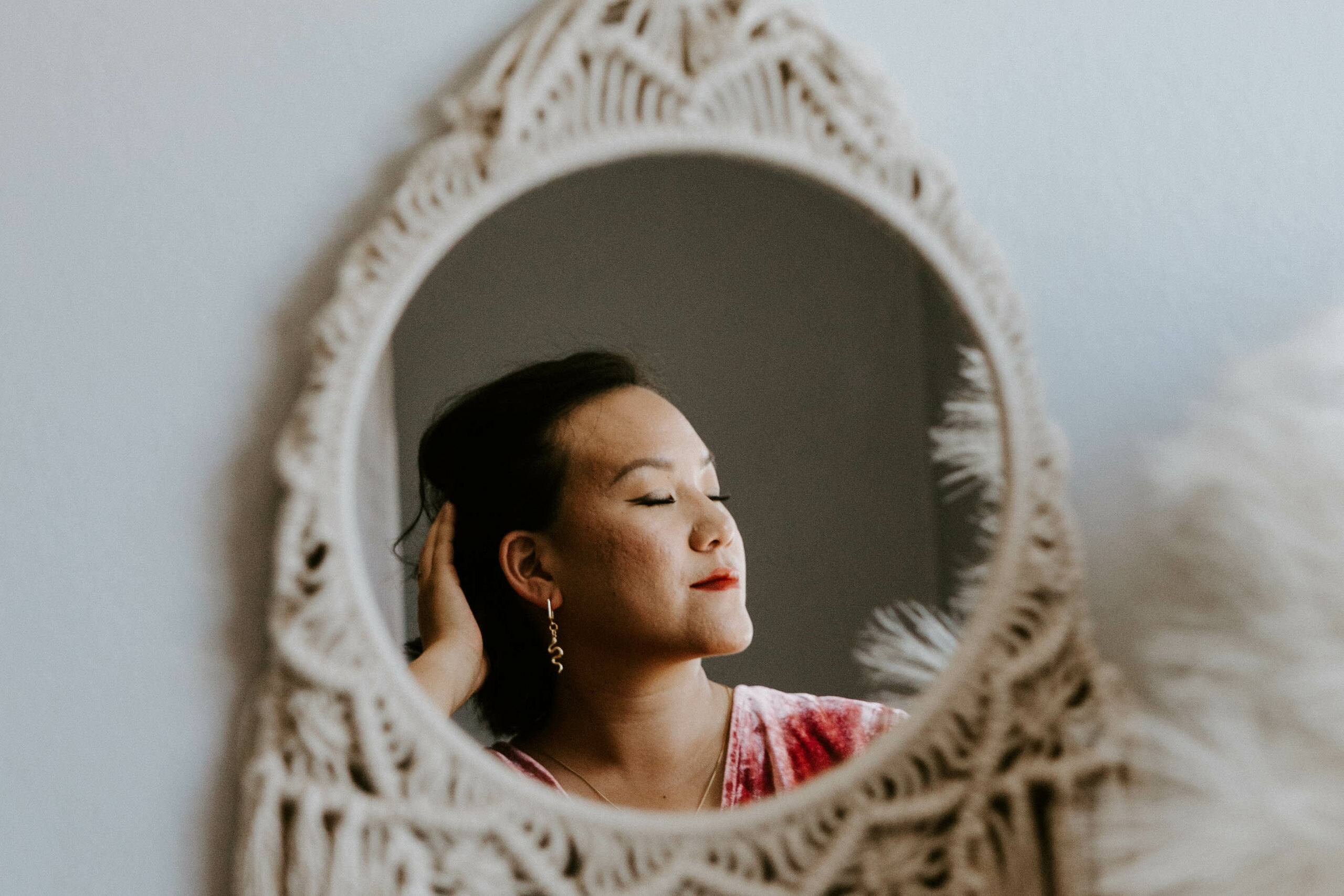
Julianne Rose Photography
The Artisan Voices blog explores the histories, experiences, pivotal moments, and innovative initiatives in an artisan or maker business while celebrating craft, community, and culture.
